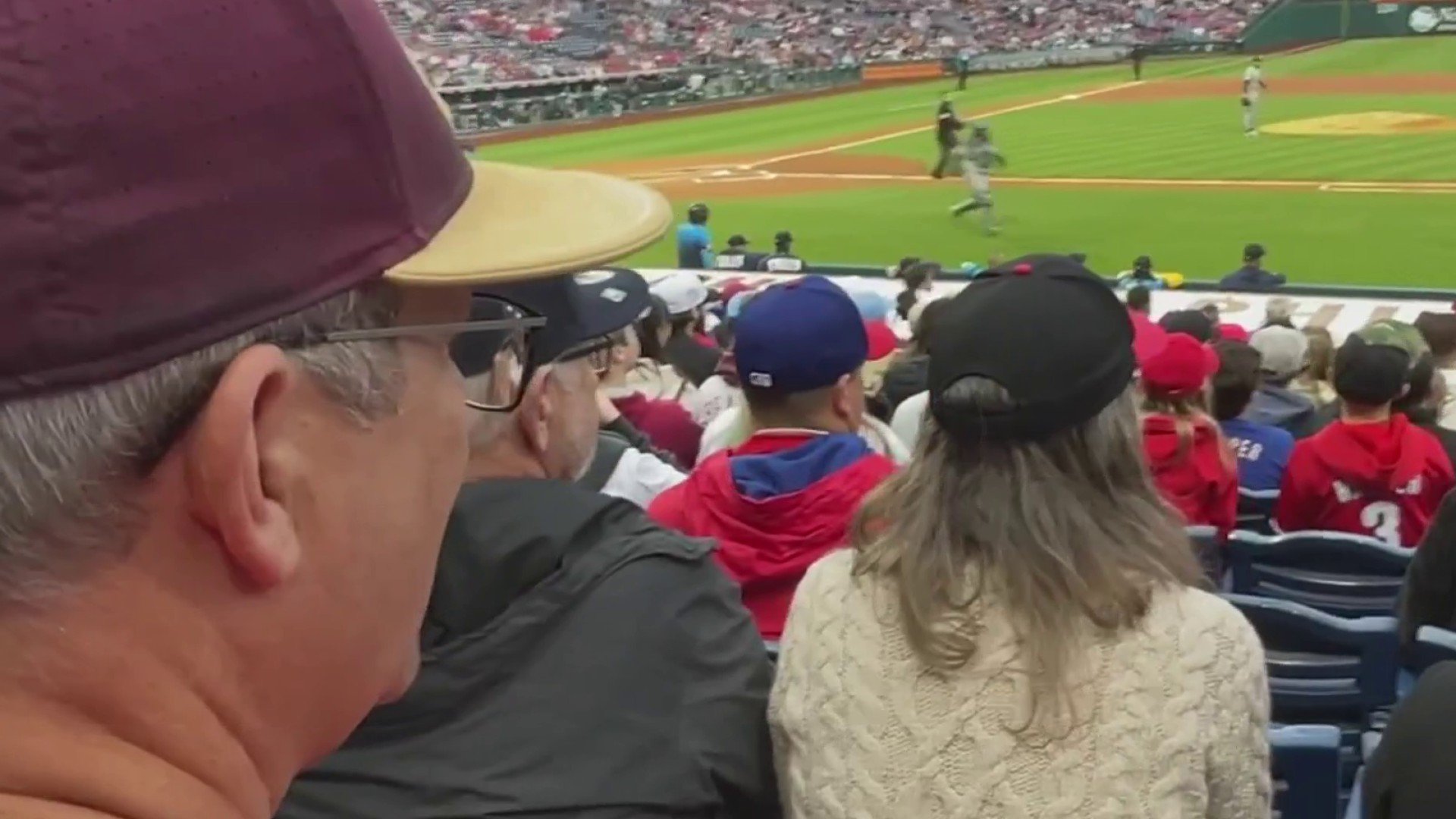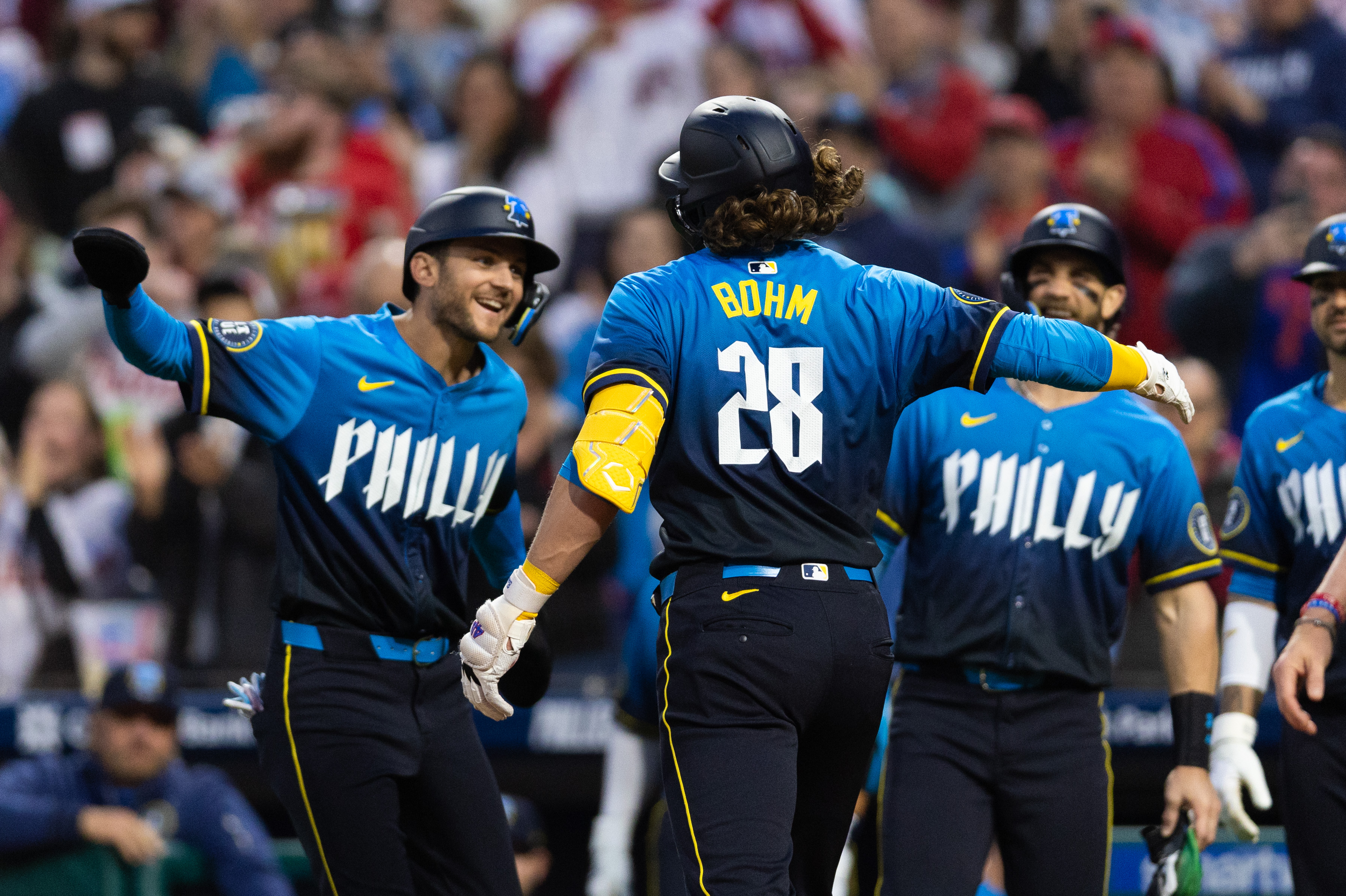Minor-league schedules are wrapping up and both Reading and Lehigh Valley have just a dozen regular-season games remaining. From there, both teams will be in their league's playoffs, giving many of the Phillies' top prospects a chance to win a championship.
Even if the Fightin Phils and IronPigs fall short, 2016 has provided many of the Phillies' top young players with a taste of winning. In that respect, it's been a successful season. Even at the major-league level, guys like Maikel Franco, Odubel Herrera, Cesar Hernandez and the Phillies' young starting pitchers have seen what winning feels like. The Phils played very well for the first six weeks of the season, and even though they've faded from contention, they're not nearly as irrelevant as they were at this time a year ago.
This week, the Future Phillies Report begins at Double A:
C Jorge Alfaro (AA)
Alfaro, hitting .279/.322/.444 on the year with 13 homers and 60 RBIs, could be playing with the Phillies by mid-September. He's the only catcher on their 40-man roster other than Carlos Ruiz and Cameron Rupp. With the 40-man roster filled and teams routinely bringing up a third catcher when roster expand in September, it seems likely Alfaro could get his first taste of The Show.
Reading is the favorite to win the championship, which ends on Sept. 17 if it goes the full five games. The Phillies will almost certainly keep Alfaro with Reading through the end of its run; it would make little sense to keep him at Double A all year only to move him when the Fightin Phils are within striking distance of a title.
But those Alfaro skills you've been hearing and reading about for a year — power, arm strength, athleticism — could be on display at Citizens Bank Park for a few games in mid-to-late September. That opportunity would be as positional as anything else, because Alfaro is likely to begin 2017 at Triple A.
OF Dylan Cozens (AA)
It's not a huge surprise that Cozens has gone homerless in his last six games, all on the road. He has 37 homers and 114 RBIs on the year, with 28 HR and 77 RBIs coming at FirstEnergy Stadium in Reading.
Philadelphia Phillies
Complete coverage of the Fightin' Phils and their MLB rivals from NBC Sports Philadelphia.
Cozens is 1 for his last 20 with 10 strikeouts. Those K's just continue to pile up for him — he has 162, second-most in the Eastern League and 43 more than teammate Rhys Hoskins, who ranks fourth with 119.
Cozens has the tools. He has impressive raw power, he can run, he can field his position. But the tendency to swing and miss could hold him back from ascending the minor-league ladder as quickly as Phillies fans want. It certainly has this season. If Cozens had his same numbers — .284/.361/.608 with 36 doubles, 37 HR and 114 RBIs — but with 40 fewer strikeouts, he'd probably be in Triple A by now. But a 30-percent strikeout rate is impossible to overlook. For reference, only six players in the majors have a higher strikeout rate than Cozens: Steven Souza Jr., Chris Davis, Chris Carter, Mike Napoli, Trevor Story and Giancarlo Stanton.
And keep in mind this is Double A pitching Cozens is whiffing against. It's not like he's faced an assortment of experienced former major-leaguers with five-pitch mixes.
Look for the Phillies to work this offseason and next spring training with Cozens to correct the issue. He has so much power potential that he could be a true difference-maker if he makes more contact and becomes less of a liability vs. lefties (.205 BA, four HR).
1B Rhys Hoskins (AA)
Reading's powerful first baseman has slowed down in August, going 54 plate appearances without an extra-base hit. But Hoskins continues to walk, so he has a .352 on-base percentage over that span despite hitting .190.
As I outlined in last week's Future Phillies Report, Hoskins' walk rate has increased in each of the last four months — he walked in seven percent of his plate appearances in May, nine percent in June, 13 percent in July and 21 percent in August.
That's a valuable skill for an all-offense slugger like Hoskins to develop.
He's hitting .278/.369/.562 this season with 25 doubles, 35 homers, 107 RBIs, 61 walks and 119 K's.
OF Andrew Pullin (AA)
An underrated member of the Phillies' farm system, Pullin has had an impressive year. In 80 games, the left-handed hitting corner outfielder has hit .321 with 14 homers, 51 RBIs and an .885 OPS.
In 44 games since his promotion to Reading, Pullin has hit .344 with with nine doubles, 10 homers and 32 RBIs. He's hit at home and on the road, against lefties and against righties. Pullin, who had a two-homer game on Sunday, has hit .348 with a .400 OBP in 100 plate appearances vs. left-handed pitchers this season.
A fifth-round pick in 2012 out of Centralia HS in Washington, Pullin is still just 22 years old after five seasons in the Phillies' farm system. He doesn't have the same prospect label as a Nick Williams or a Cozens, but he's produced.
Pullin, citing personal issues, actually retired in April before returning to Clearwater in May. The Phillies are glad to have his bat back. The organization has so much more young outfield talent now than it did a year or two ago, when that position group was as bleak as it got.
OF Nick Williams (AAA)
Williams' bat has picked back up this week. He had multi-hit games Tuesday and Wednesday, and four of his last eight hits were doubles.
But again, he's striking out a lot and not walking. Over his last 150 plate appearances, Williams has one walk and 40 strikeouts. He's hit .236 with a .240 OBP over that span. If you're hitting .236 with, say, a .320 on-base percentage, you can still provide your team value during a slump — especially if you're a middle-of-the-order hitter like Williams.
But Williams doesn't do that. When he's cold, there's no production at the plate. That's an issue and it's not one you just correct at the major-league level, where pitchers have more control and command than anywhere else in the world.
Williams has power. He has bat speed and foot speed. But if his plate selection doesn't improve in a tangible way, his ceiling will be limited. There are plenty of guys in the majors with power and speed and a sub-.300 on-base percentage. They're mostly role players, not stars.
SS J.P. Crawford (AA)
Crawford has three errors in his last five games to give him 19 on the season. For most of the year, he was well ahead of last year's pace, when he committed 27 errors. Now, he's in line to finish with 22 or 23, which wouldn't represent meaningful progress.
Of course, defensive ability is not perfectly illustrated by an error total. Errors don't take into account all the balls an infielder reaches that others don't. Things like range and arm strength don't show up in that one counting stat.
Crawford has range and impressive arm strength. He has the tools that will enable him to stick at shortstop and potentially be an above-average defender there one day. But talent alone doesn't make you a good defensive shortstop. Look at Freddy Galvis as an example — for years, the Phillies touted Galvis' glove as he showed flashes of brilliance but also made a lot of mental mistakes or miscues on routine plays. There was a difference in the defense of Jimmy Rollins and Galvis — Rollins had the flashiness while also making just about every routine play every season. It took Galvis a few years, but finally in 2016 he's lived up to his defensive potential. It could take Crawford a similar amount of time.
Offensively, Crawford continues to walk — he has 69 walks and 69 strikeouts this season. He's hit .253 with a .342 OBP in 334 plate appearances at Triple A.
RHP Nick Pivetta (AAA)
Pivetta lasted just four innings on Thursday night, giving up two runs in a loss to the Pawtucket Red Sox. He hit 95 mph and struck out six more batters, though, giving him 20 K's in 15 innings since his promotion to Triple A.
The Phillies appear to be monitoring his innings count. Pivetta is at 139, seven above his career-high with probably three more starts to go. He'll finish somewhere between 155 and 160 innings in his age-23 season.
The rising strikeout rate and decreasing walk rate with Pivetta are true signs of progress. He's struck out 8.5 batters per nine this season and walked 3.0. Prior to this season, his K/9 was 6.9 and his BB/9 was 3.3.
RHP Jimmy Cordero (AA)
Cordero, the hard-throwing reliever the Phillies acquired from Toronto last summer for Ben Revere, has pitched well lately at Double A. After giving up three runs in his first two appearances with Reading, he's allowed just one run over his last 7⅓ innings.
Cordero's presence on the Phils' 40-man roster and his potential as a setup man or closer could get him a look in the majors in September. Phillies manager Pete Mackanin wants more relief options, and Cordero has the stuff to spell Edubray Ramos or Hector Neris. Ramos has made 24 appearances since July 1, and Neris has pitched in a MLB-leading 64 games.
CF Roman Quinn (AA)
Quinn has homered in two of his last three games, both from the left side. That's good news for the switch-hitter because he is naturally right-handed.
All five of Quinn's homers this season have come from the left side. But he's actually hit 35 points better (.319) from the right side. It's important for a switch-hitter to hold his own against both sides. We saw for years with Shane Victorino, for example, that when a hitter is so much weaker from one side (Victorino was from the left) it almost nullifies that switch-hitting ability.
Quinn, who has deceptive power, has hit .320 over the last week with a double, a triple and those two homers. He's hit .278 with a .355 OBP with Reading this season and has 29 steals in 37 attempts.



